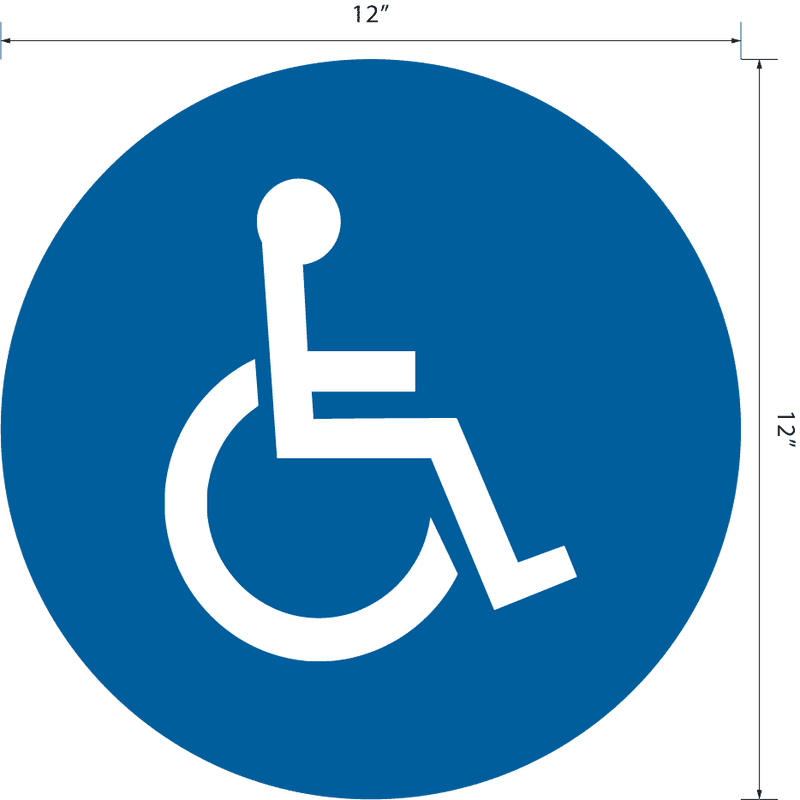The Role of ADA Signs in Adhering To Availability Specifications
ADA Signage: Guaranteeing Access and Conformity in Public Spaces
ADA signage plays a vital duty in guaranteeing accessibility and conformity within public spaces, dramatically adding to an inclusive environment for people with handicaps. By sticking to ADA criteria, signs not only promotes navigation however likewise emphasizes an organization's dedication to diversity and equal rights. As we check out the nuances of ADA signs, from tactile features to design ins and outs, it's essential to consider exactly how these components coalesce to support the legal rights of all individuals. What are the usual challenges organizations encounter in maintaining conformity, and how can future patterns in signage remain to drive access ahead?
Value of ADA Signs
In modern-day society, the relevance of ADA signage expands beyond plain conformity with lawful requireds to embody a commitment to inclusivity and availability for all individuals. These signs are important in creating atmospheres where people with disabilities can navigate public spaces with the exact same ease and self-reliance as those without impairments. By offering standardized and clear information, ADA signs makes certain that everybody can access facilities, solutions, and info without barriers.
The relevance of ADA signage depends on its ability to improve the top quality of life for individuals with disabilities by promoting equivalent access. It gets rid of the barriers that could or else hinder their ability to take part fully in neighborhood life. These indications offer as noticeable indications of an organization's commitment to diversity and equal rights, showing more comprehensive social worths that promote the rights and dignity of all individuals.
Additionally, ADA signage plays a crucial role in public security. By assisting people to departures, bathrooms, and other necessary centers, it ensures that all individuals, regardless of physical capability, can evacuate securely during emergency situations. In recap, ADA signs is not simply a governing demand yet an effective tool for promoting a equitable and comprehensive culture.
Crucial Element of Conformity

Positioning is essential; signs have to be mounted in areas that are conveniently visible and obtainable. Commonly, signs ought to be placed in between 48 and 60 inches from the ground to ensure ease of access for both standing and wheelchair users. Responsive elements, such as Braille, are important for individuals with aesthetic disabilities, giving vital details in a non-visual layout.
High-contrast colors between the message and history are required to improve readability for people with low vision. The ADA mandates details comparison ratios to ensure quality. Furthermore, personality size is an essential factor to consider, with minimal elevation requirements dictated by the seeing range to ensure readability from different angles.
Design Considerations for Access
Creating accessible signs needs a thorough technique to ensure it satisfies the demands of all customers, specifically those with handicaps. The dimension of the text is similarly vital, with ADA guidelines suggesting a minimum elevation based on seeing range to make certain readability.
Contrasting shades between text and history are necessary for exposure, especially for individuals with visual impairments. A high comparison ratio assists identify the text from its history, improving readability under different lights problems. Furthermore, tactile elements, such as Braille and elevated characters, are vital for individuals that are blind or have reduced vision. These components need to be located at a consistent height and placement to make certain simple access and comprehension.
Additionally, the placement of signage plays a significant role in access. Indicators must be mounted in areas that are unhampered and easily reachable. Guaranteeing that signage is installed at proper elevations and angles makes it possible for all users, including those utilizing wheelchairs, to connect with them successfully.
Common Blunders to Prevent

An additional widespread mistake is the wrong placement of signage. ADA guidelines specify precise height and place needs to make certain that indicators are easily visible and reachable by all individuals, including those utilizing wheelchairs. Disregarding these guidelines my website not only hampers access however likewise takes the chance of non-compliance with legal criteria.
Additionally, insufficient comparison between text and why not find out more background is a constant oversight. Sufficient contrast is vital for readability, particularly for people with low vision. Developers occasionally pick shades that are visually attractive however lack the required comparison, rendering the text tough to determine.
Lastly, some developers fail to incorporate tactile aspects, such as Braille, which are essential for individuals that are blind. Leaving out these attributes not only results in non-compliance with ADA policies yet likewise restricts accessibility for a segment of the population that relies upon tactile information.
Future Trends in Signs
Developments in innovation and enhancing awareness of inclusivity are shaping the future trends in signage design. Digital signs, for instance, is evolving to consist of interactive attributes and real-time updates, which can be important in offering dynamic information in public areas.
One more arising pattern is the use of augmented fact (AR) to enhance customer experience. AR-enabled signs can overlay electronic info onto the physical setting, giving visually impaired people with auditory or haptic feedback. ADA Signs. This technology not only boosts availability however also produces an engaging experience for all individuals
Sustainability is also a substantial factor influencing signs trends. Green materials and energy-efficient illumination remedies are being prioritized to align with worldwide ecological goals. Furthermore, innovations in materials scientific research are resulting in the growth of even more weather-resistant and long lasting indicators.
Final Thought
ADA signage plays a crucial duty in assuring accessibility and compliance within public spaces by incorporating tactile elements, high-contrast colors, and tactical placement. The adherence to ADA requirements not just assists in secure navigating for people with handicaps yet additionally indicates a company's devotion to variety and inclusivity. By staying clear of usual blunders and welcoming future fads, public spaces can continue to advance these worths, guaranteeing that the legal rights and dignity of all people are respected and supported.
ADA signage plays an indispensable function in guaranteeing accessibility and compliance within public areas, substantially contributing to an inclusive environment great post to read for people with handicaps. As we discover the nuances of ADA signage, from responsive functions to develop ins and outs, it's important to consider just how these components coalesce to copyright the civil liberties of all individuals.In modern culture, the value of ADA signage extends past mere conformity with legal requireds to symbolize a commitment to inclusivity and accessibility for all people. By offering clear and standardized information, ADA signs guarantees that every person can access facilities, solutions, and info without obstacles.
ADA signage plays an essential function in assuring availability and compliance within public areas by including responsive elements, high-contrast shades, and tactical positioning. (ADA Signs)